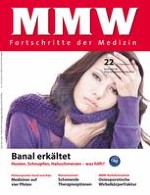20.12.2012 | CME DER MMW
Befreien Sie sich von der Tyrannei des Dringlichen
Infekte der Atemwege: Vieles hilft nichts
Erschienen in: MMW - Fortschritte der Medizin | Ausgabe 22/2012
Einloggen, um Zugang zu erhaltenZusammenfassung
Wie behandeln Sie Husten und Halsschmerzen? Erfüllen Sie die Erwartungen der Patienten oder schicken Sie diese ohne Rezept wieder nach Hause? Unser Autor nimmt zu diesen für die Praxis wichtigen Fragen Stellung.












